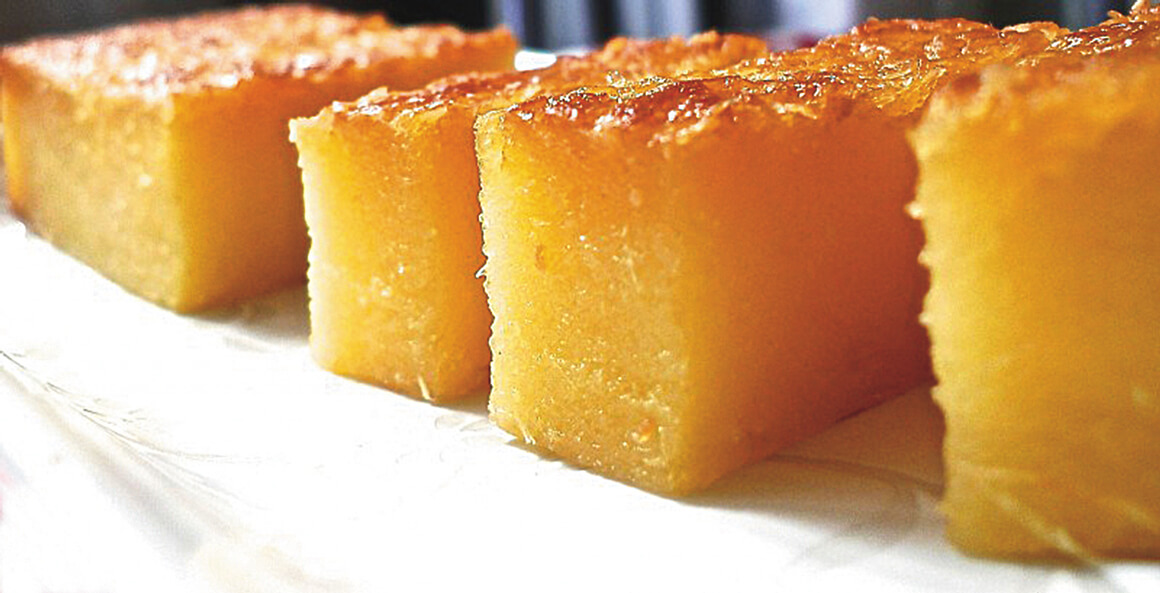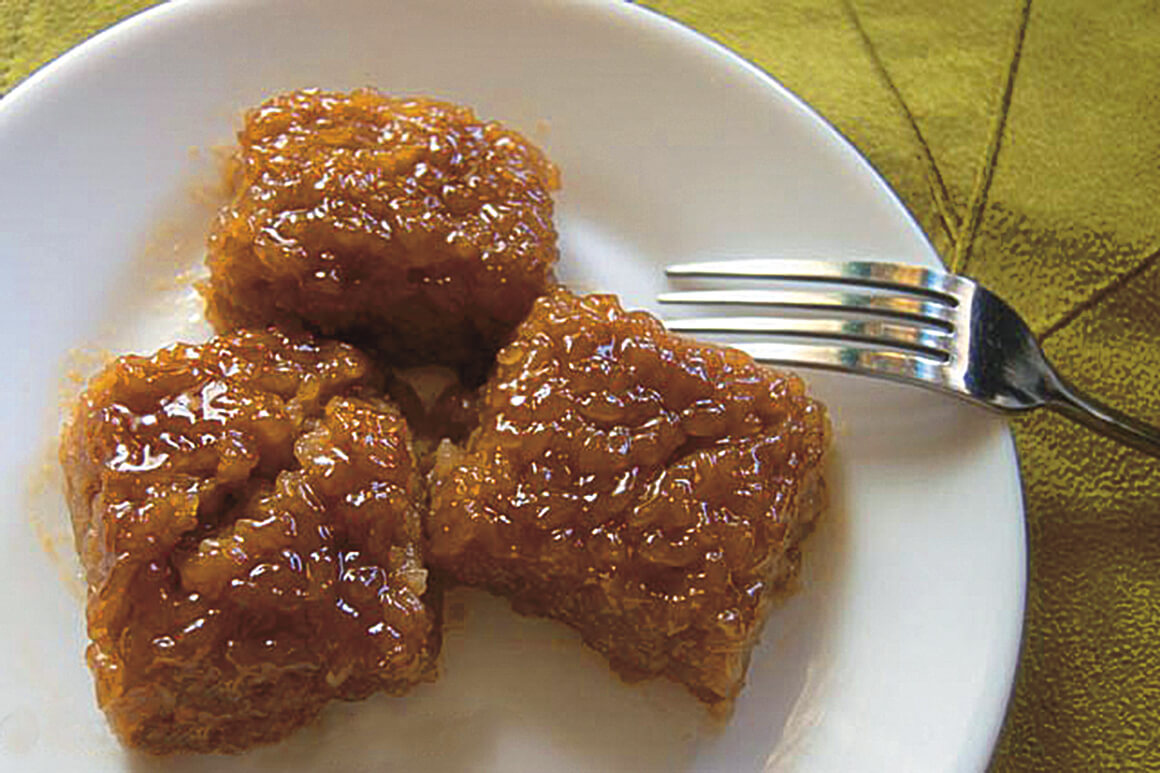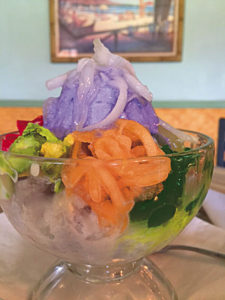
I can’t begin to tell you how excited I am to write about my favorite Filipino dish—da Pinoy desserts! As a side benefit of covering this subject matter, I’m able to have a taste of some of my favorite desserts.
It has been a practice among many Filipino-practicing Roman Catholics to abstain from eating meat every Friday during Lent and the entire Holy Week. It is not recommended to eat pork, chicken, beef and other types of meat during this time of the year. I remember quite well—my parents practiced this long-held taboo during the Lenten season. Growing up in the Philippines, this tradition wasn’t much of a sacrifice since we were not able to afford to buy meat anyway. And we rarely ate meat until we migrated to Hawai‘i, where we saw an over-abundance of all kinds of meat—just go to Costco or Safeway and you’ll know what I mean.
In the Philippines, Holy Week or Semana Santa is a big deal so for the entire week many Filipinos commemorate the sacrifice, death, and resurrection of the Lord Jesus Christ culminating with Easter Sunday for some festive activities. Most Filipinos who migrated to Hawai‘i brought with them this cultural and spiritual tradition of not eating meat during the holy week.
The good news, however, is that you can always consume your favorite Pinoy desserts during Holy Week without feeling guilty or worrying about calories. So, in the absence of meat during this period of Lent—it doesn’t stop the Filipinos here in Hawai‘i to prepare their favorite Pinoy desserts.
We all know that every province in the Philippines has their own specialty of desserts—and this article of Pinoy desserts lists a few of my favorites that remind me of the homeland, and more importantly, reminds me of Nanang’s home-cooked desserts. Here are few of my favorite Filipino sweets. What about you? What are your favorite Pinoy desserts?

1. Cassava Bibingka Cake (Filipino Coconut Cake)—this by far is my favorite Filipino dessert. I love this dessert so much that I find myself begging one of our Ilocano friends from Laoag City to bring this dessert at our weekly Bible study sessions. Well, you may be thinking—what about the calories of this dish—who cares about calories when you are enjoying your favorite bibingka. This dessert is a thin, unfrosted cake made with cassava flour and cream of coconut. Every time we have a family gathering, we always have bibingka, and most often you will see this dessert at many Filipino parties here on Maui. This is a must and expected dessert dish at every Filipino party here at home. According to a recent comment from an online Filipino recipe journal, “cassava flour has an interesting texture. It is very fine, but has a bit of grit to it. Once it’s cooked the starches explode (not really, but they do something magical) and the cake becomes spongy and sticky like a cross between jello bars and pudding.” For the non-Filipino food afficionado, this is a must try dessert.

2. Leche Flan – if I had to rank my favorite Pinoy dessert, leche flan is definitely one of my top five for a very simple reason: it’s smooth, creamy, and with a sweet taste of caramel. Well, let me assure you that this dish is the melt-in-your mouth dessert you’ll ever have the pleasure of eating anytime of the year. Flan, or caramel pudding, is a custard dessert with a layer of soft caramel on top, as opposed to crème brûlée, which is pudding with a hard caramel top. This dish is made with eggs, milk, and sugar and flavored with vanilla and cooked delicately. The word leche is Spanish for milk. I was told by many of my Kababayan friends that this dish was originated from the regions along the “border of France and Spain and was brought to the Philippines at the time of Spanish colonization.”

3. Suman (Filipino Rice Cake with Coconut) – a favorite dessert with the Ilokanos in northern part of Luzon. It consists mainly of 3 ingredients: sweet rice, coconut milk, and brown sugar or molasses. Some serve it with toppings, some don’t. This rice dessert, suman, is popular during New Year celebrations in the Philippines, because many Ilokanos believe that if you consume as many sweet treats as you can handle during this time, the coming year will be a good one. I guess; we can always find good excuses to have Pinoy desserts anytime of the year!

4. Halo-halo (“Mixed Together”) – a popular Filipino dessert for every occasion especially during the summer. Halo-halo consists of a mixture of fine shaved ice and evaporated milk to which various ingredients are added, including boiled sweet beans, coconut, sago, gulaman (agar jelly), avocado, banana, and melon. Add a special treat of ube ice cream and it will make this dessert a one-of-a-kind, “broke da mouth” experience. If you are looking for good halo-halo on Maui, you may want to try Tante’s Restaurant in Kahului!
Vince Bagoyo, Jr. is the President and Owner of V. Bagoyo Development Group. He was graduated from Chaminade University, where he received his Bachelor of Arts degree majoring in Political Science and Business Administration. He earned a Masters of Public Administration (Government Finance) from California State University, Long Beach. Bagoyo has served in government in a variety of positions including Councilman (1991 to 1992), Director, Department of Housing and Human Concerns, and Director, Department of Water Supply. He was previously President of Lāna‘i Holdings and Water Company and Vice President of Lāna‘i Company. He is currently the Vice President of the Maui Memorial Medical Center Foundation and was the Chairperson of the Maui Filipino Centennial Celebration Coordinating Council. His wife Jennifer is an RN at Maui Memorial Hospital.
